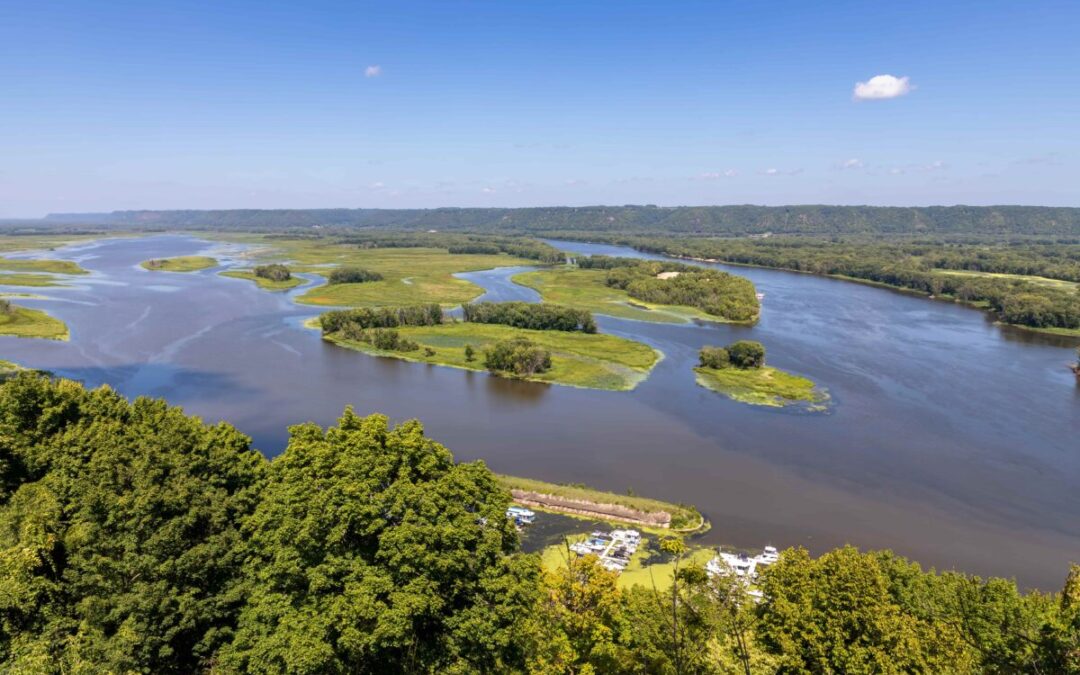
Nitrate levels in the Des Moines River routinely exceed the acceptable safety levels of 10 mg/L set by the U.S. Environmental Protection Agency. (Adobe Stock)
The Iowa Department of Natural Resources has just completed taking public input as it considers strengthening Iowa drinking water standards.
The state’s waterways have long been contaminated with high levels of pollutants tied to the state’s factory farms. Even the Des Moines River, which borders the city and provides drinking water for the capital city’s residents, routinely contains high levels of noxious nitrates.
Iowa Environmental Council General Counsel Michael Schmidt said clean water advocates are calling on the DNR to tighten nitrogen and phosphorus limits in the state’s rivers and streams, as they produce dangerous algae.
“We also want DNR to set a protective nitrate standard fir drinking water, which has been a concern, especially this summer,” said Schmidt. “We want standards for microcystin, which is a toxin produced by algae, and we also want standards for protecting human health.”
The U.S. Environmental Protection Agency recommended updating human standards in 2015 – but, as of now, Schmidt said, the state has not done so.
Iowa’s current safety threshold for nitrates is 10 milligrams per liter, but new research suggests that nitrate exposure may be toxic even at lower levels.
Schmidt said outdated nitrate safety standards create even more dangerous conditions for Iowa’s waterways, many of which are already imperiled.
“About two-thirds of our waters are impaired, not meeting the uses that the state has already set,” said Schmidt. “And for a lot of our lakes we are seeing microcystin advisories, so that’s the toxin produced by algae.”
Water researchers arrived at the suggested tighter standards based on concerns from Iowans about the potential link between the state’s second-highest cancer rate and exposure to chemicals released by factory farms into the air and nearby groundwater.
Related: The link between Iowa’s worsening water quality and rising cancer rate

Clara Reynen wants to AI-proof Iowa City
The Iowa City City Council candidate wants to bring her library background into city government. When Clara Reynen turned 18, she asked her parents...

Shutdown could eliminate Iowa child nutrition assistance
By Mark Moran A new report from a prominent food and environmental advocacy group reveals that at least one in four Iowa children under the...

Davenport restaurant feeding federal workers for free amid government shutdown
The only qualifier a federal employee has to meet to eat free at Flavors of India is to show a work badge to verify their employment. Flavors of...

Big harvest no comfort to Iowa farmers, who worry about another Farm Crisis
President Donald Trump is expected to announce soon that his administration will send billions of dollars in assistance to farmers. As Iowa and...

Report: Nitrate levels toxic to Iowa water
By Mark Moran New data from the National Library of Medicine show nitrates in Iowa's waterways reached toxic levels earlier than...

This quirky Des Moines home up for sale features a working fire pole
Built by a well-respected local architect as their personal residence, a quirky home for sale in the Lower Beaver neighborhood hides a very unusual...




